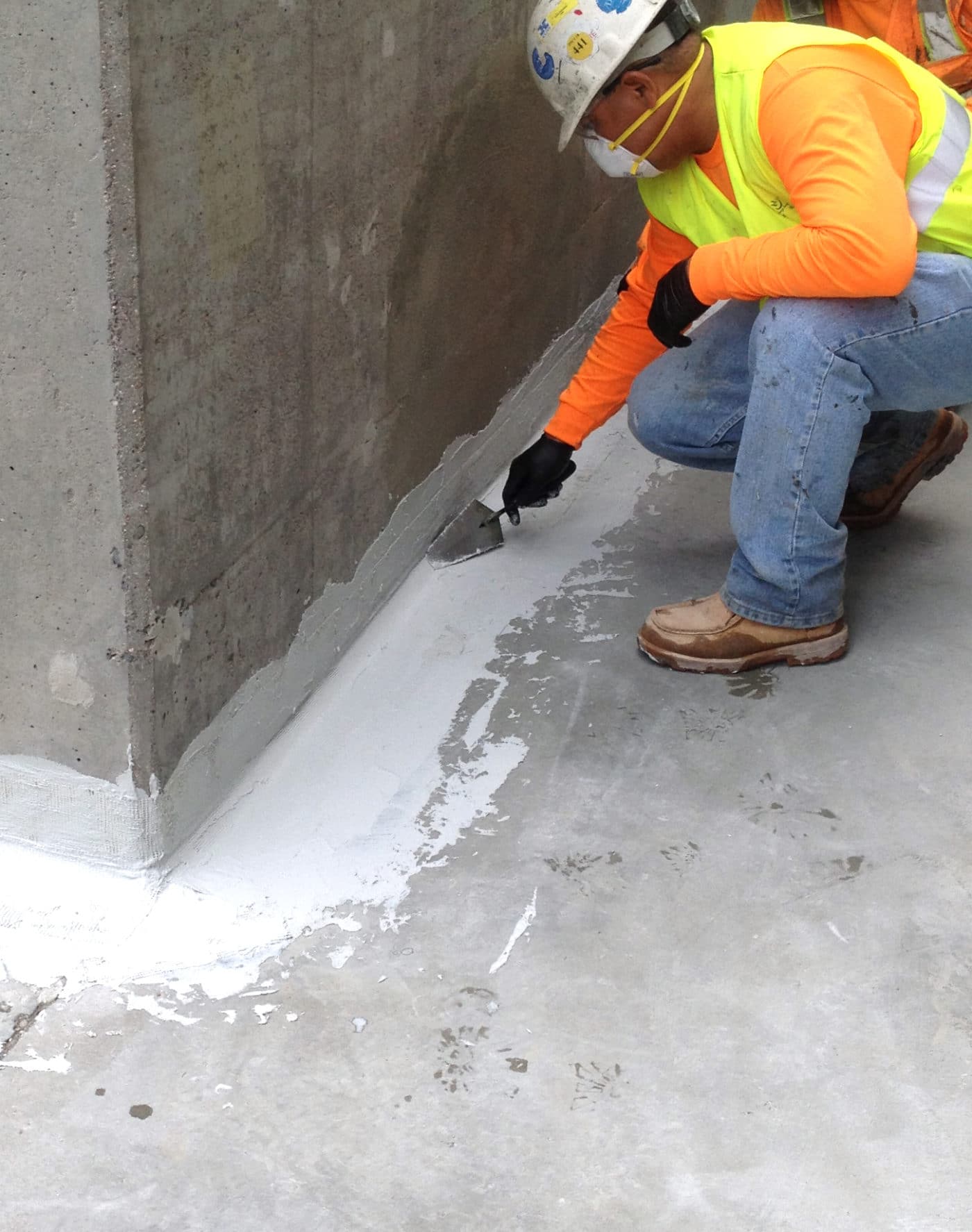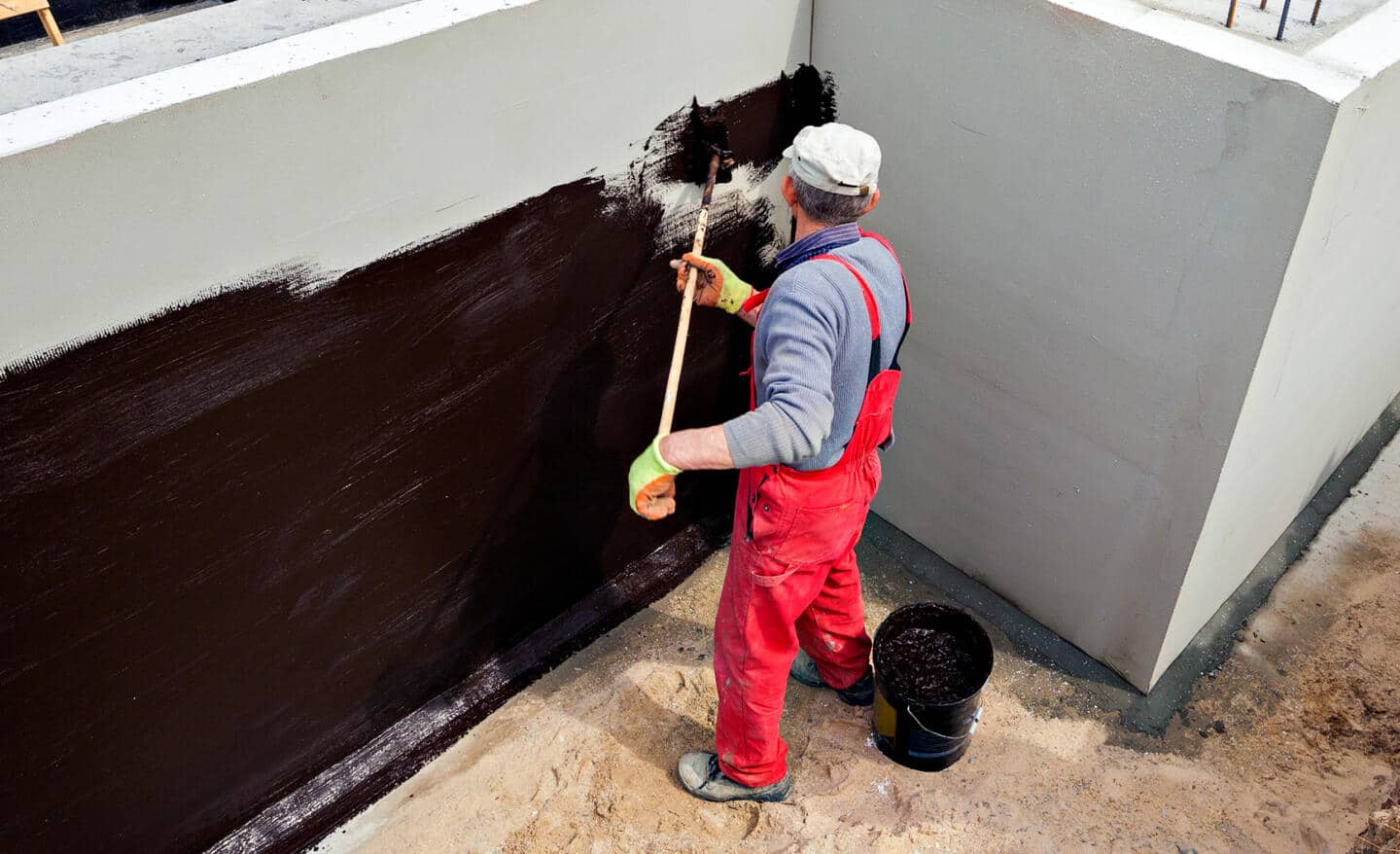Why Waterproofing Is Crucial for Resilient Frameworks: a Thorough Evaluation
Waterproofing plays a necessary function in the longevity of structures. It serves as an obstacle versus wetness, which can bring about substantial issues like mold and mildew and damage. Understanding the various waterproofing techniques and their implications is crucial for homeowner. The consequences of disregarding this facet can be severe. Checking out these aspects exposes not just the requirement of waterproofing, however additionally its wider effect on residential or commercial property worth and security.
Recognizing Waterproofing: Meaning and Value
Waterproofing works as a vital barrier versus wetness breach, protecting frameworks from prospective damages. It encompasses numerous approaches and materials made to stop water penetration right into buildings, making certain longevity and performance. The relevance of waterproofing can not be overstated, as it shields against a variety of concerns, consisting of mold and mildew development, wear and tear of products, and architectural weakening.Effective waterproofing solutions can consist of membrane layers, coatings, and sealers, each tailored to specific atmospheres and architectural styles. By developing a protective layer, these services aid preserve a dry interior, which is critical for the health of passengers and the preservation of home value.Moreover, investing in waterproofing at the building and construction stage is significantly a lot more cost-efficient than attending to water-related concerns after they occur. Recognizing the principles of waterproofing is important for engineers, home builders, and home proprietors intending for durable, durable structures that stand up to the examination of time and ecological obstacles.

The Influence of Water Damage on Structural Integrity
Water damage positions considerable dangers to architectural integrity, primarily through the development of mold and mildew. These microorganisms not only jeopardize interior air top quality yet likewise lead to product destruction in time. Furthermore, prolonged exposure to dampness can damage structural components, boosting the possibility of collapse or failure.
Mold and Mildew Development
Wetness breach positions a considerable hazard to the architectural stability of structures, leading to the expansion of mold and mildew and mildew. These fungis prosper in wet atmospheres, usually taking origin in concealed areas such as wall cavities, under flooring, and in ceilings. Their growth not just develops unsightly discolorations and undesirable odors yet likewise contributes to a decline in interior air quality, posing wellness dangers to occupants. Mold and mildew can jeopardize products like timber and drywall, leading to additional dampness retention and producing a cycle of damages. Early detection and removal are vital to stop comprehensive development, highlighting the need of effective waterproofing procedures. Resolving wetness concerns immediately can secure both the wellness of residents and the durability of the structure.
Architectural Weakening Risks
Unrestrained dampness intrusion can bring about extreme structural weakening, threatening the stability of buildings. Water damages often affects fundamental elements, such as light beams, columns, and wall surfaces, leading to jeopardized load-bearing capacity. Prolonged direct exposure to dampness can trigger materials like wood to rot and steel to rust, damaging their architectural residential properties. This wear and tear might cause fractures, bowing, or perhaps devastating failings if left unaddressed. Water Solutions. Additionally, water seepage can weaken the soil beneath structures, causing settling or shifting that more aggravates structural threats. Consequently, implementing efficient waterproofing solutions is essential in protecting a structure's architectural stability, protecting against pricey repair work, and ensuring safety and security for residents. Proper maintenance and aggressive steps are important in mitigating these substantial dangers connected with water damages
Sorts Of Waterproofing Methods and Materials
Waterproofing approaches and products play a vital function in shielding structures from water damage. Key strategies consist of membrane waterproofing, which offers a physical obstacle; fluid waterproofing options that develop a smooth coat; and cementitious waterproofing options recognized for their longevity and convenience of application. Understanding these numerous techniques is necessary for selecting one of the most appropriate approach for specific building and construction needs.
Membrane Layer Waterproofing Methods
Membrane layer waterproofing techniques are crucial for shielding frameworks from the harmful impacts of water seepage. These techniques include the application of waterproof membranes that create an obstacle versus wetness. Both primary kinds of membrane systems are sheet membrane layers and liquid-applied membrane layers. Sheet membrane layers, generally made from products such as rubberized asphalt or polycarbonate, are erected and can be turned out and stuck to surface areas. On the other hand, liquid-applied membranes are applied as a fluid and remedy to create a seamless layer. Both kinds provide adaptability and durability, dealing with different applications, including roofings, cellars, and structures. Appropriate setup and upkeep of these membranes guarantee long-term protection, improving the life expectancy and stability of the structures they guard.
Liquid Waterproofing Solutions
Fluid waterproofing services represent a flexible option to standard membrane layer systems. These options commonly include the application of fluid coatings that heal to develop a seamless, resilient obstacle against water infiltration. Numerous kinds of fluid waterproofing materials are readily available, including polyurethane, asphalt, and acrylic-based formulations. Each type offers special buildings, such as versatility, bond, and UV resistance, making them suitable for varied applications. The application process typically entails splashing or rolling the fluid onto surfaces, enabling protection of complicated shapes and information, which minimizes potential weak points. Liquid waterproofing solutions are specifically beneficial for locations with motion, such as joints and fractures, as check my site they can suit architectural shifts without endangering stability, making certain resilient security for frameworks.
Cementitious Waterproofing Options
Countless cementitious waterproofing alternatives are available, offering reliable remedies for various building and construction demands. These systems usually consist of a mix of concrete, sand, and additives, making them suitable for both exterior and interior applications. Amongst the preferred choices are crystalline waterproofing pop over to this site items, which react with moisture to develop a water resistant obstacle within the concrete matrix. In addition, flexible cementitious coverings offer improved flexibility, accommodating small structural movements without jeopardizing the waterproofing integrity. It is additionally common to utilize cementitious sealants for joints and splits, making certain thorough defense against water infiltration. Overall, cementitious waterproofing alternatives are valued for their resilience, simplicity of application, and compatibility with different substrates, making them a favored choice in modern building and construction techniques.
Long-Term Cost Cost Savings Through Effective Waterproofing
Buying efficient waterproofing remedies can significantly minimize lasting costs for building proprietors and programmers. By avoiding water intrusion, these options minimize damage to structural components, reducing the demand for costly fixings and maintenance over time. Waterproofing also shields interior finishes and home furnishings, lessening substitute costs and improving the total life expectancy of the property.Moreover, reliable waterproofing can bring about power cost savings by enhancing insulation and lowering humidity-related problems. This leads to reduced heating & cooling expenditures, adding to an extra sustainable economic version for residential property management.Additionally, the execution of waterproofing measures can enhance home worth by making certain a dry, safe, and sturdy setting. While the preliminary investment in waterproofing might seem substantial, the long-term economic benefits far surpass the in advance costs, making it a sensible decision for any individual included in construction or property administration.

The Role of Waterproofing in Structure Codes and Rules
Waterproofing plays a considerable role in building codes and regulations, mirroring its importance in modern-day building practices. These codes are made to ensure safety, durability, and sustainability in buildings, highlighting the need for efficient waterproofing procedures. Different national and regional structure codes describe details requirements for waterproofing materials and methods, specifically in areas prone to water intrusion, such as basements and foundations.Compliance with these laws not just shields frameworks from moisture-related damages yet likewise safeguards public health by stopping mold and mildew growth and architectural instability. Inspectors commonly analyze waterproofing components throughout the building procedure to guarantee adherence to developed standards. As environment modification increases the regularity of extreme climate events, the duty of waterproofing in building codes is expected to progress, possibly leading to more stringent regulations. In general, the combination of waterproofing in regulatory structures underscores its critical role in achieving lasting, resistant frameworks.
Case Studies: Effective Waterproofing Solutions
Effective waterproofing solutions have been implemented across numerous jobs, showcasing innovative methods that enhance architectural stability and longevity. One notable instance is the renovation of the historic Smith Tower in Seattle, where advanced membrane layer systems were employed to safeguard the framework from water breach. This method not just maintained the building's aesthetic but also prolonged its lifespan.In an additional instance, a big business structure in Miami utilized crystalline waterproofing innovation, which responds with wetness to form a barrier versus water. This option showed efficient against the city's high humidity and hefty rainfall.Additionally, a bridge in San check out this site Francisco undertook a substantial waterproofing therapy utilizing epoxy finishes, which greatly lowered maintenance prices and boosted longevity. These study illustrate the performance of customized waterproofing techniques in diverse settings, highlighting the value of selecting suitable approaches to attend to details difficulties and ensure the longevity of frameworks.
Best Practices for Implementing Waterproofing Approaches
Executing reliable waterproofing strategies calls for cautious preparation and adherence to finest practices - Yard drainage Omaha. It is important to carry out a comprehensive site evaluation to determine possible areas of water ingress. This assessment educates the selection of suitable products and strategies customized to details environmental conditions. Utilizing top notch, durable waterproofing membranes can considerably enhance defense versus moisture.Additionally, proper installation methods are essential; guaranteeing that surfaces are tidy and free from contaminants promotes optimal bond. Routine maintenance checks should be arranged to recognize any kind of signs of wear or damage, permitting timely repairs.Moreover, incorporating drainage systems can efficiently handle water overflow, protecting against accumulation around frameworks. Educating all employees included in construction about waterproofing requirements more assurances uniformity and adherence to best practices. Ultimately, an aggressive method to waterproofing can substantially extend the life-span of structures and lower long-lasting maintenance costs
Frequently Asked Concerns
Exactly How Does Waterproofing Affect Power Effectiveness in Structures?
Waterproofing greatly improves power performance in structures by protecting against dampness breach. This decreases the demand for cooling and heating, maintains constant indoor temperature levels, and eventually reduces energy intake, adding to long-term sustainability and cost financial savings.
Can Waterproofing Be Applied to Existing Structures?
Waterproofing can indeed be related to existing structures. Different methods, such as membranes, coverings, and sealants, allow homeowner to enhance defense versus dampness, therefore extending the structure's integrity and minimizing potential damage in time.
What Are the Indicators of Inadequate Waterproofing?
Indicators of insufficient waterproofing include water discolorations on walls, mold development, peeling off paint, stuffy smells, and dampness in basements - French drain installation Omaha. These indications recommend possible structural damage and the demand for immediate focus to stop additional wear and tear
How Often Should Waterproofing Be Inspected or Kept?
Waterproofing needs to be inspected at the very least annually, particularly in areas with hefty rainfall or changing temperature levels. Regular upkeep warranties very early detection of issues, promoting architectural integrity and prolonging the life-span of the structure.
Are There Eco-Friendly Waterproofing Options Available?
Green waterproofing alternatives are increasingly offered, making use of lasting products such as bio-based polymers and natural sealers. These options not just shield structures however likewise lessen ecological influence, interesting environmentally aware building contractors and homeowner.